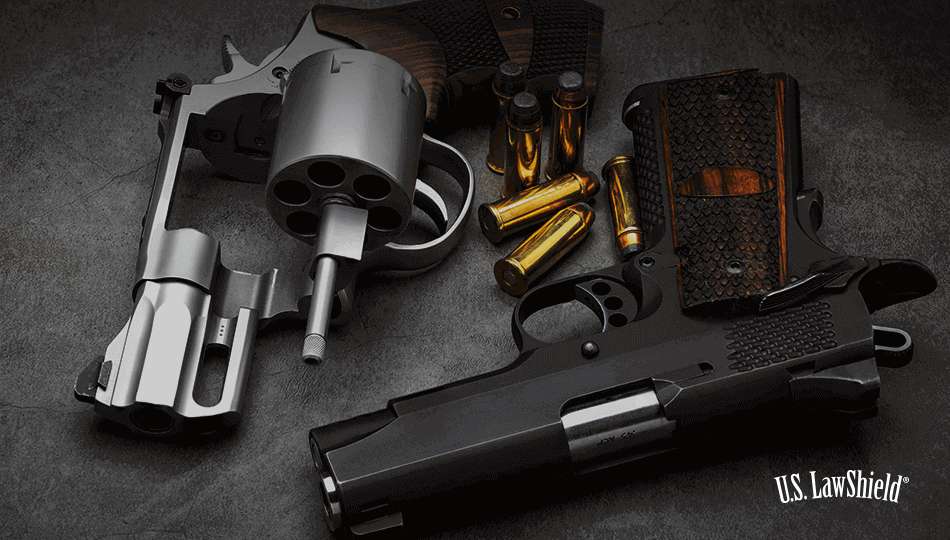
Firearms, handguns, pistols, and guns. These are all words for the same thing, so it follows that it’s no wonder why many gun owners get confused by terminology. There aren’t hundreds of gun terms, there are thousands, and it can be a challenge knowing where to start your verbal gun education. To help you along the way, we’ve put together this guide to handgun terminology.
ACP: Acronym for “Automatic Colt Pistol.” A designation for a specific cartridge; i.e., 45 ACP designed by John Moses Browning in 1904.
Action: The part of a firearm that controls functions such as loading, firing, extracting, and/or ejecting ammunition. There’s more than one type of firearm action.
Airgun (pistol): A platform that fires plastic or metal pellets of varying calibers typically using compressed air.
Backstrap (of a gun): The rearmost portion of a handgun’s grip; the more narrow, back portion of a handgun’s gripthat makes contact with approximately the middle of the palm of your strong-side hand.
Barrel: A metal tube manufactured from various types of metal with varying finishes in different sizes that’s designed to have a bullet fired through it.
Battery (firearms): When a gun is properly in battery it means the slide or bolt is fully closed and ready to fire. Gunsout of battery have the slide or bolt stuck partially open.
Beavertail: The rearmost part of a handgun’s grip that curves up and outward, away from the frame. It’s meant to improve the shooter’s grip on the gun. Some guns, such as Glocks, are sold with different sizes of interchangeable beavertails to fit varying hand sizes.
Blade sight: A narrow, raised front sight with an appearance similar to that of an inverted blade. Usually seen on revolvers.
Bluing: The process of electrochemical conversion coating a gun both to protect it from rust and wear, and also to give it a specific aesthetic.
Bolt: A tubular, metal mechanism containing the firing pin, extractor, and sometimes the ejector. The bolt face—the end facing the muzzle of the firearm—is the part that holds the base of a cartridge when the gun has a round chambered.
Bolt-Action: A type of firearms action requiring the shooter to manually manipulate the bolt of the gun using an angled arm or knob to cycle cartridges in and out of the chamber. Bolt-action firearms require the shooter to pull the bolt back to eject the spent cartridge before the next round can be loaded.
Bolt Handle: The lever, or arm, attached to the bolt of a bolt-action firearm.
Bolt Pistol: A pistol with a bolt-action, rather than a striker-fired or hammer-fired action.
Break (trigger): Refers to the moment the trigger is pulled back far enough to release the hammer (the exact sequence of events within the action depends on the type of action). When speaking positively about a trigger break, words such as “clean” and “crisp” are used.
Bull barrel: Barrels that are thicker and heavier than standard barrels and often don’t taper between the action and the crown. In a 1911-platform handgun, a bull barrel doesn’t have a bushing. Bull barrels reduce felt recoil and are often more durable. See bushing.
Bullet: The projectile component of a round of ammunition. The bullet is the component that exits the barrel when a gun is fired.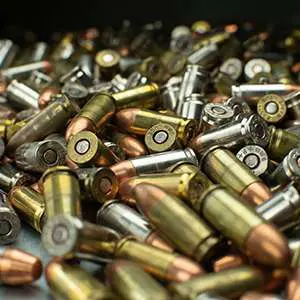
Bushing: Part of a 1911 barrel that fits over the muzzle end and is removeable and replaceable. The barrel bushingis meant to provide stability and improve accuracy. It also affects barrel lock-up. Proper fitment of the barrel bushingmatters for overall performance of the gun.
Bushing compensator: A compensator made to replace the bushing of a 1911 for the purpose of reducing felt recoiland muzzle rise which, in turn, can improve accuracy.
Bushing wrench: A tool used to remove the barrel bushing of a 1911. Different manufacturers often have varying sizes required to remove the bushings of their 1911s.
Caliber: Refers to the diameter of the bore of the barrel and also the size of bullet the gun is chambered in. At its simplest, in ammunition, caliber refers to the width of the bullet; for example, 9x19mm is 9.01 mm (0.355-inches) in diameter.
Cartridge: Often used to refer to a completely loaded round of ammunition, but also used as “spent cartridge” when referring to the empty brass left over after firing. Sometimes interchangeably used with “case.”
Centerfire: Cartridges with the primer located in the center of the base of the case; the firing pin strikes the primer at the center to fire the bullet through the barrel of the gun. Sometimes used to refer to guns that use centerfire ammunition; i.e. “centerfire fire.”
Chamber: The part of a firearm where a cartridge is loaded so the gun can be fired.
Channel liner: A plastic tube used to protect the metal of a firearm from friction created by the firing pin within the slide.
Clip: Clips are devices made to feed the magazines of guns. The firearms term “clip” isn’t interchangeable with “magazine.” They’re not the same thing. An easy way to remember it is that clips feed magazines and magazinesfeed guns. See magazine.
Co-witness: When your iron sights are aligned with your red dot sight’s zeroed dot and can be used to back them up if need be.
Commander (1911): The model of 1911 that’s more compact than the full-size Government. A Commander has a 4.25-inch barrel. Some manufacturers refer to models as being Commander-sized when they technically aren’t.
Compensator: A device that connects to the threaded barrel on the muzzle of a gun for the purpose of reducing felt recoil and muzzle rise which, in turn, should improve accuracy and target re-acquisition.
Conversion cylinder: A drop-in cylinder that allows certain revolvers to fire a different type of ammunition than they were originally made to shoot. For example, a conversion cylinder allows a cap-and-ball revolver to fire modern centerfire ammunition.
Crane (revolver): The part of a revolver with two sides, one that inserts into the frame and one that inserts into the cylinder, for the purpose of facilitating the swinging-out action of the cylinder away from the frame of the revolver so the gun can be loaded, unloaded, cleaned, or disassembled.
Cylinder: The cylindrical metal component of a revolver that contains multiple chambers, each of which holds a round of ammunition, and rotates so the revolver may fire as the trigger is pulled.
DA (firearms): See double-action.
DAO: See double-action only.
Decocker: A lever or mechanism that allows you to de-cock a pistol. For example, de-cocking returns a DA/SA pistolto double-action for the first shot fired, after which it’ll be single-action until the magazine is empty. See cock.
Defender (1911): A compact, or sub-compact, 1911 manufactured by Colt that has a 3.0-inch barrel and a gripapproximately one-half-inch shorter than the Commander size.
Derringer: An extremely small break-action pistol originally designed in the early 19th century by Henry Deringer. Shouldn’t be confused with a miniature revolver such as the North American Arms 22 Magnum.
Disconnector: Both a passive safety and a functional part of semi-automatic pistols. For example, the disconnectorprevents the firearm from firing when it’s activated (in the 1911 pistol it’s part of the grip safety). It also serves to disengage the trigger and sear when the trigger is fully pressed rearward. The trigger must be reset to reconnect the trigger and sear, allowing the next shot to be fired.
Double-action: An action where the trigger both cocks the gun’s hammer and releases it. Some double-action guns are double-action only (DAO) and some are DA/SA (double-action/single-action). If the gun is DAO, every shot firedwill require a longer, heavier trigger pull; if a gun is DA/SA, the first shot fired will be double-action with all subsequent shots being single-action. See single-action.
Double-action only: A gun that only fires double-action as opposed to one capable of both double-action and single-action. The acronym for double-action only is DAO. See double-action.
Double stack: A gun designed with a magazine that holds ammunition in two columns, resulting in a wider grip and greater capacity overall. For example, the majority of Glocks are double-stacks, although the manufacturer also now makes a few Slimline and single-stack pistols.
Dovetail: Refers to the shape of the notch cut into the firearm, typically for mounting iron sights. Dovetail notches are wider at the base and narrow at the top, typically allowing sights to be tapped in and out although they’re sometimes held in place by a set screw.
Draw: The action of removing your firearm from its holster or other storage place so it can be fired, stored, or otherwise handled.
Drop safety: A mechanism in modern firearms designed to prevent the gun from firing if it’s dropped. Most modern firearms have drop safeties.
Drum magazine: A magazine with a cylindrical base designed to hold far more rounds of ammunition than a basic box magazine.
Ejection port: The open section in a gun’s slide or receiver meant for the spent brass/case/shotshell hull to eject during firing. The majority of firearms are designed with right-side ejection ports, but there are some left-side ejection ports on the market made for left-handed shooters.
External safety: A safety that’s visible on the outside of the gun that can be manipulated by hand such as an external thumb safety. Many firearms, such as Glocks, have internal safety mechanisms rather than external thumb safeties.
Felt recoil: The amount of movement the shooter is aware of, or feels, as a result of the firearm’s momentum during live fire. Different calibers, barrel lengths, and platforms produce more or less movement and varying degrees of felt recoil.
Field strip: Taking a gun apart for cleaning or inspection. This term is often used when referring to taking a gun apart just enough to give it a basic cleaning as opposed to fully disassembling the gun for in-depth repairs, inspection, or parts replacement.
Finish: The type of coating, or lack thereof, on a firearm.
Firearm: A readily portable weapon designed to expel a projectile utilizing explosives.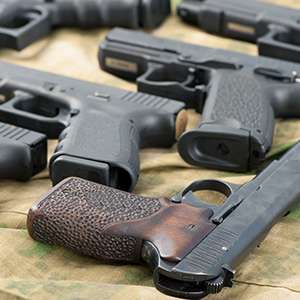
Flintlock: A firearm with an ignition mechanism involving a hammer with a flint that strikes a steel frizzen, creating a spark, igniting the black powder, and causing it to fire a bullet. The flintlock is an old single-shot firearm invented in the 16th century that was used until the 19th century, when it was replaced by percussion weapons.
Frame: The part of a firearm that houses the action. The frame can be made from a type of metal or plastic.
Front sight: A post or bead located at the muzzle end on the top of a handgun’s slide or barrel that’s used in conjunction with the rear sight for accurate shots.
Government (1911): A traditional, classic 1911 that has a full-sized frame and a five-inch barrel.
Grip: On a handgun, the portion of the frame held in the shooter’s hands so the firearm can be fired.
Grip panel: A part in the correct shape and design to fit onto the grip of a handgun, usually attached by screws, meant to either customize the gun’s appearance or provide a firm grip through texturing and/or width.
Gun: An inanimate object made from metals and plastics that has a metal tube designed to expel projectiles at high speeds through the use of explosives.
Handgun: A gun designed to be fired while held in one or both hands that’s not made for and doesn’t require support from the shoulder.
Enjoying this content? Find out how you can get more sent straight to your inbox.
Hammer: See hammer-fired.
Hammer-fired: A gun fired when the hammer, which is located at the rear of the handgun, impacts the firing pin to ignite the primer of the cartridge, firing the gun. Certain models of revolvers have firing pins as integral parts of the hammer, meaning the firing pin and hammer are a single component that moves to impact the primer. 1911s are hammer-fired but aren’t the only type of handgun with this action.
Holster: A piece of gear similar in appearance and function to a stand-alone pocket or sheath made to hold a handgun against the wearer’s body. Typically, but not always, cut and/or molded to fit the specific model of firearm.Generally made for carry at the waist but also sometimes used for shoulder, chest, or thigh-height carry.
Integral sights: Sights installed as fixed, unmoving parts of the gun.
Internal safety: Safety mechanisms on guns located on the inside of the gun rather than the outside. For example, Glocks have a series of internal safeties and no external thumb safeties.
Iron sights: Sights made from metal or plastic to assist the shooter in accurately lining up the firearm with a target.
Laser: An aftermarket device that mounts to a handgun, typically to a rail on the underside of the frame near the muzzle, for the purpose of assisting in aiming accurately. Useful for low-light and no-light shooting.
Limp wristing: A shooting term used to describe an issue where shooters fail to execute a proper grip by letting their wrists move or fall or otherwise having a weak grip on the gun, often resulting in cycling failures.
Magazine: The magazine of a firearm feeds ammunition to the gun. Magazines contain springs and followers designed to move rounds of ammunition up into the chamber of the handgun. Capacity varies by model. Not to be confused with a clip. See clip.
Magazine holster: An independent pocket or pouch designed to hold one or more magazines for a gun, usually made for wearing on the belt.
Magazine release: A button or lever on a handgun designed to release the magazine from a firearm when it’s activated.
Magazine pouch: A pocket or pouch made to hold the magazines for a gun, typically on the belt of the shooter.
Magazine well: An open space accessible from the bottom of the grip of a handgun made for the insertion of magazines. A feature of semi-automatic handguns.
Magnum: A type of cartridge capable of producing greater velocity and energy than similarly sized standard cartridges. For example, 357 Magnum and 44 Magnum.
Moon clip: A circular loading device made for revolvers meant for rimless cartridges such as 45 ACP.
Mouse gun: A small, palm-of-the-hand sized handgun chambered in small cartridges.
Muzzle: The open end of a gun’s barrel where bullets exit the gun during firing.
Muzzle break: A device that attaches to the threaded muzzle end of the barrel for the purpose of redirecting escaping gases to reduce recoil and muzzle rise while improving accuracy. Some designs can be tuned for even greater precision while shooting. There are numerous models on the market with different shapes and specific purposes. The threading and caliber of the barrel must match that of the muzzle device.
Officer (1911): A compact 1911, traditionally with a 3.5-inch barrel.
Optics ready: A handgun that ships from the factory with a cut in the top of the slide for the purpose of mounting a red dot to the gun.
+P/+P+: Ammunition that’s been loaded to a higher internal pressure than the standard load. Designed to produce increased velocity and energy. Not all guns are rated for these higher pressure rounds, so take the time to check the capabilities of your firearm’s design before using them.
Picatinny rail: Also known as the MIL-STD-1913, this rail is a standard interface system made up of evenly-spaced brackets used to mount accessories to a firearm. The brackets are undercut into an approximate T-shape that’s streamlined and flattened with hexagonal edges to better secure items to the rail. These rails can be purchased as aftermarket pieces but are frequently part of a gun’s factory design.
Pistol: See handgun.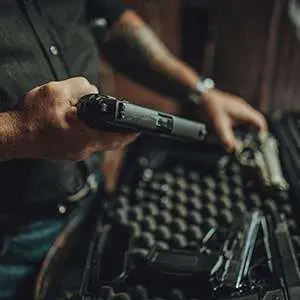
Ported/porting: Openings machined/cut into the slide of a gun meant to reduce muzzle rise and make a firearmflatter-shooting.
Pull weight: A measurement of how much pressure is required to pull a trigger back far enough to fire a gun. Devices called trigger pull gauges are made to measure this in pounds and ounces.
Racking: The action of manipulating the slide of a firearm rearward to chamber a round or clear a malfunction.
Rear sight: A sight located at the top of the back of the slide, frame, or other similarly-located component on a handgun. The rear sight works with the front sight so the shooter can take an accurate shot. The two sights need to be a set that function on the same line of sight and height to work properly, which is why it’s best to use a set rather than attempting to mix and match.
Recoil-operated: A semi-automatic handgun with a barrel and breech block made to recoil rearward during firing.
Red dot sight: An optic designed to be mounted to the top of a handgun that has a colored dot at its center for the purpose of aiming. Usually made in green or red and offered with or without magnification.
Revolver: A handgun with a revolving cylinder containing multiple chambers that line up with the gun’s barrel and rotate counterclockwise during firing.
Rimfire: A cartridge that fires when the firing pin of the gun strikes its edge, rather than its center. Rimfires are designed with thinner case walls for easier firing. For example, 22 LR.
Safety: Either a mechanical device made to prevent a firearm from firing, when activated, or the process of the shooter themselves following the rules of gun safety.
Sear: The part of the trigger of a gun created to hold the hammer, or a similarly functioning part, back until the shooter applies the proper amount of pressure to activate the mechanism that release it so the gun can be fired.
Semi-automatic: A firearm designed to fire one shot for each pull of the trigger while loading the next round into the chamber of the gun automatically from its magazine. For example, Glocks are semi-automatic and revolvers aren’t.
Series 70: The first type of 1911 that was designed without a firing pin block safety. It was later altered, creating the Series 80 1911.
Series 80: The type of 1911 with a firing pin block safety, among other differences from the original Series 70.
Shoulder holster: A holster made to be worn over the shoulders with the holster on one or both sides. Sometimes also has a magazine holster.
Side plate: The metal plate found on the side of a revolver held in place by a varying number of screws that covers the internal mechanisms of the gun.
Sidearm: A gun made to be carried on the body in a holster.
Sight radius: The distance from the front to the rear sight, measured in inches.
Single-action (SA): A gun made so that the trigger releases the hammer, unlike double-actions which are made so the trigger cocks and releases the hammer, resulting in a longer, heavier trigger pull. Single-action firearms have a lighter trigger pull than double-actions.
Single stack: A gun made to take a magazine designed to hold rounds of ammunition in a single, upright stack rather than two rows, or a double-stack.
Skeletonized trigger: A trigger with cuts or holes in it, often for aesthetic purposes, but also to reduce the overall bulk of the blade of the trigger itself.
Slide: A handgun component located on the upper portion of the firearm made to house the barrel and some other parts, such as the firing mechanism. The slide has a cut in one side so spent brass or rounds can be ejected from the gun. It moves forward and rearward along the frame of the handgun.
Slide lock: See slide stop.
Slide release: See slide stop.
Slide serrations: Cuts or grooves machined into the sides and/or top of the slide of a handgun meant to facilitate manipulating the slide, especially with wet or gloved hands. Located at the front and/or rear of the slide depending on the model of firearm.
Slide stop lever: See slide stop.
Slide stop: A part located on the side of the slide of a handgun that’s made to hold the slide to the rear when the gun is empty.
Small arms: Firearms made to be individually portable.
Snub nose: A revolver with a very short barrel. Also called a “snubby.”
Speed strip: A flat strip, usually made from rubber, made to hold cartridges by their base so to facilitate faster loading of a revolver.
Speedloader: A circular device made to hold cartridges by their base with the correct spacing to line up with the chambers of the cylinders of specific revolvers. Makes loading revolvers significantly faster.
Stippling: A method of creating texture or a design on the grip of a handgun using heated tools.
Striker: See striker-fired.
Striker-fired: This type of action in a handgun requires the slide to be racked to cock the internal striker. Pulling the trigger will then disengage safety mechanisms, freeing the striker to impact the primer and fire the gun. For example, Glocks are striker-fired.
Suppressor: A cylindrical device of varying length with internal baffles created to reduce the sound of gunshots.They don’t completely suppress the sound of gunfire, but instead reduce the decibels to a safer level to protect the shooter’s hearing, among other things.
Trigger: The bladed mechanism that activates the action of a handgun so it can fire. There are many kinds of triggers available from factory safety blade triggers to aftermarket designs created to shorten reset and lighten trigger pull.
Trigger guard: Part of a handgun, typically integral to the frame, that encompasses the trigger and helps guard it against being accidentally pressed.
Yoke (revolver): See crane.
Wheel gun: Slang for revolver. See revolver.
Your Protection Starts Here!
The information provided in this publication is intended to provide general information to individuals and is not legal advice. The information included in this publication may not be quoted or referred to in any other publication without the prior written consent of U.S. LawShield, to be given or withheld at our discretion. The information is not a substitute for, and does not replace the advice or representation of a licensed attorney. We strive to ensure the information included in this publication is accurate and current, however, no claim is made to the accuracy of the information and we are not responsible for any consequences that may result from the use of information in this publication. The use of this publication does not create an attorney-client relationship between U.S. LawShield, any independent program attorney, and any individual.

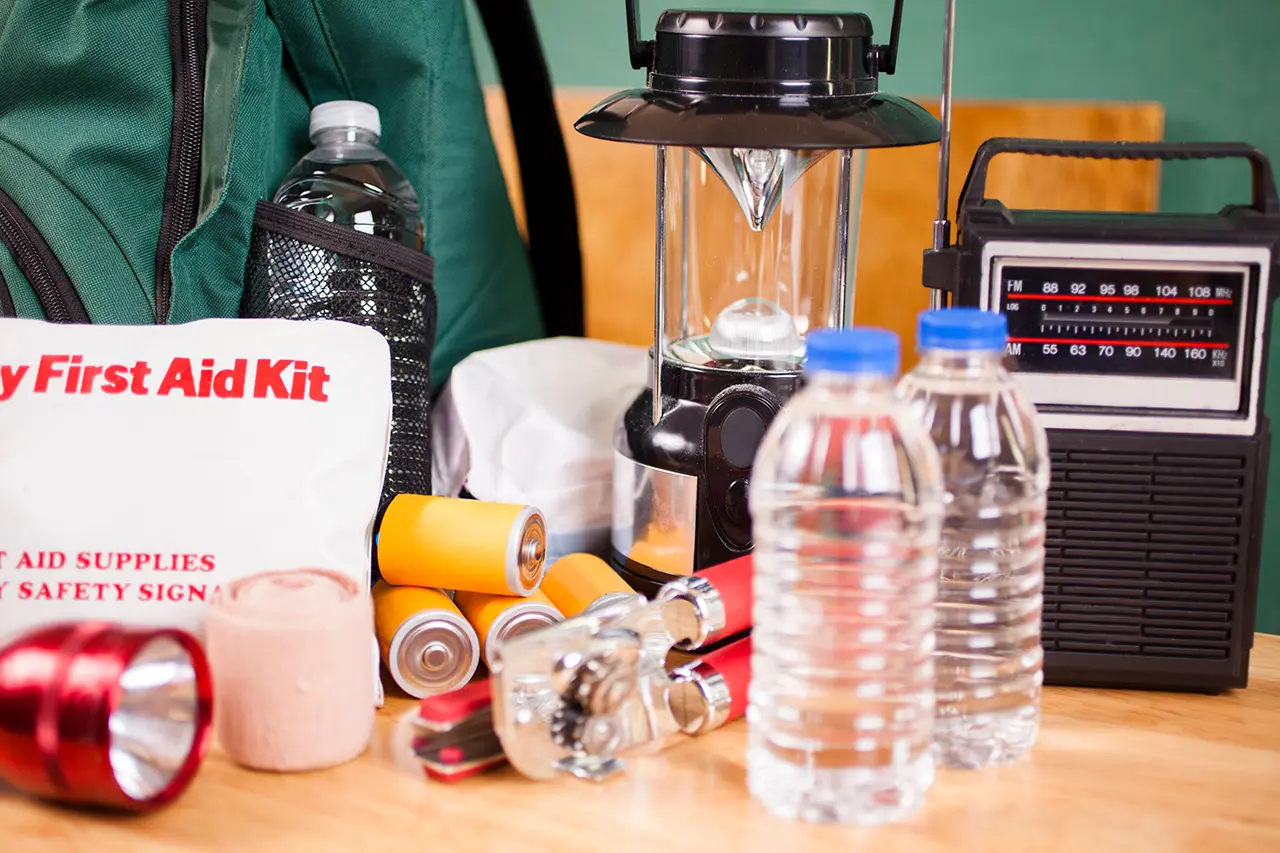
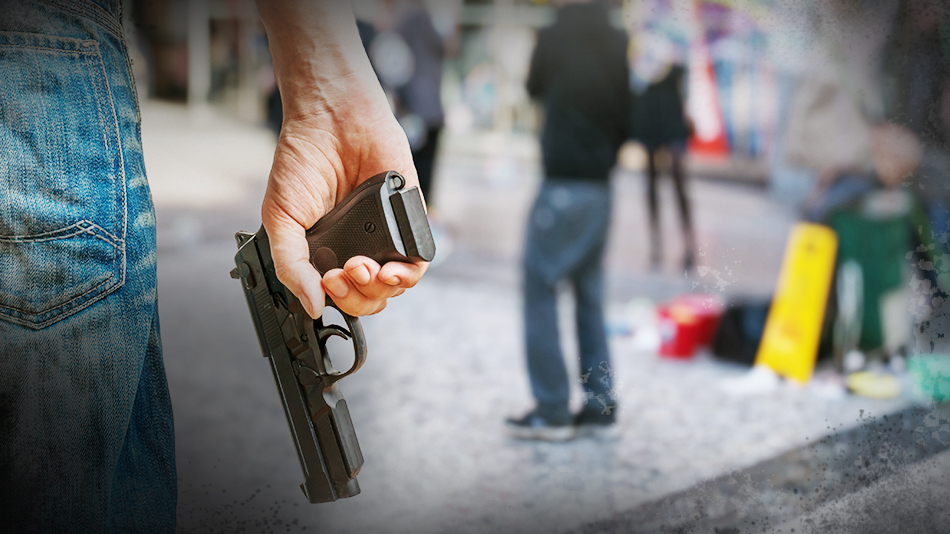
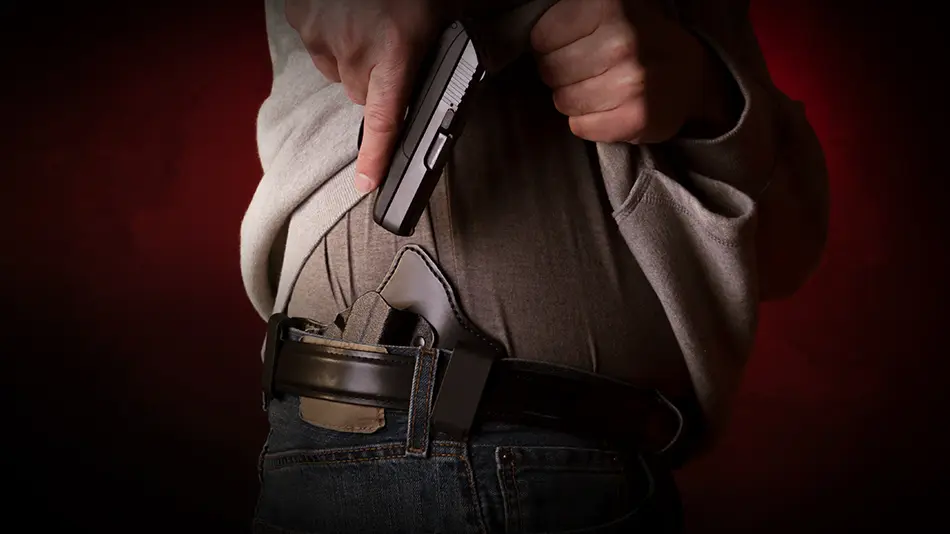

Leave A Comment